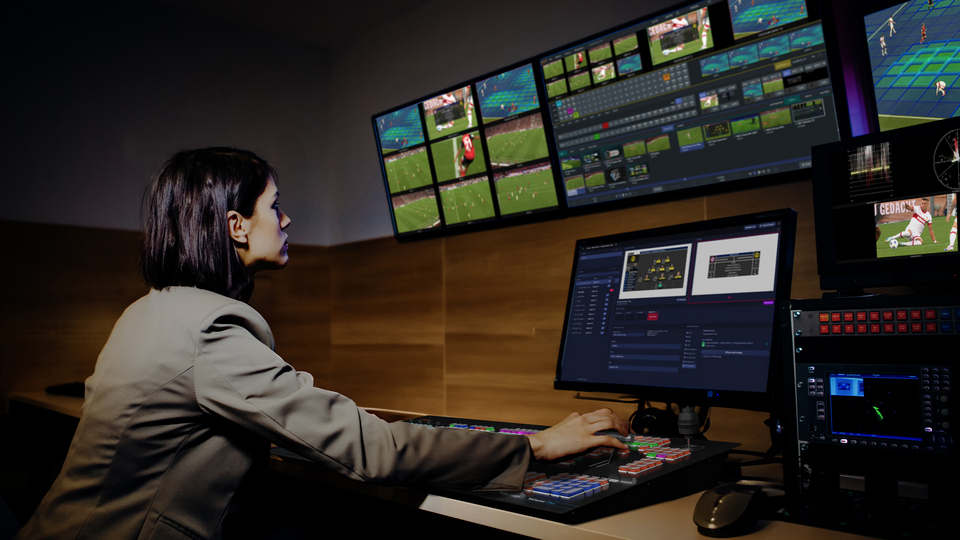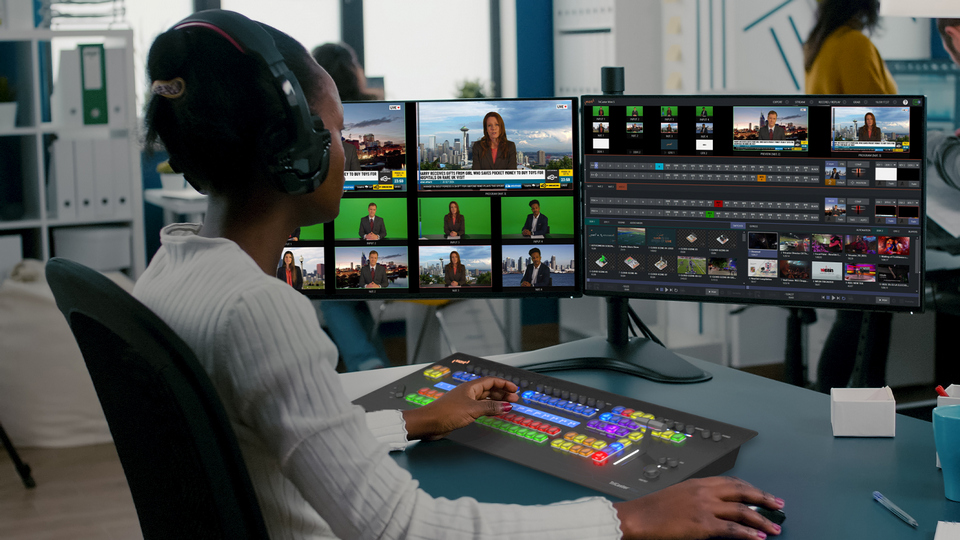Steve Taylor, Vice President, R&D at Vizrt, in TFT1957’s “The year 2030: AI or engineer?”.
-
How will the broadcasting industry and broadcast technologies change in the next 5 years?
In terms of products and technologies, we are already seeing a shift from dedicated hardware devices to more software and general compute (plus GPU), and of course Vizrt have been leading the charge here for many years. This trend is then enabling the more lifestyle and environmentally friendly shift towards live production in the cloud – reducing travel, expanding the available talent pool, and generally making things easier to work with, and focus on the story telling itself. Many Vizrt products are also incorporating AI to help with some of the more repetitive and tedious tasks such as identifying people and objects or calibrating cameras, and this trend will for sure continue.

-
If we model the world of broadcasting and broadcast tech in 2030, what role will AI play?
I am certain that AI will continue to grow as an important tool and technique for optimizing broadcast workflows – making broadcast tech easier to use and to get impactful results quickly. However, we also may see some non-technical reactions (for instance, legal or artistic) that limit some of the potential impact of AI, regardless of how amazing the benefits may be. Features like AI-enhanced audio translation, talent tracking, closed captions and signing will be ubiquitous.

-
How will AI segment?
Given the rapid evolution (that word feels wrong to write about AI by the way) of AI, it is nearly impossible to predict any more segmentation than what we know today. There is certainly a key distinction between the usage of AI machine learning (ML) to automate and optimize tasks, versus generative AI to create new things. The latter is obviously the most interesting to watch technically, but then so are the copyright lawyers and the creatives! I am sure that there will still be a badge of honor to state: “this content was generated by 100% humans!”

-
Which professions will AI displace in the broadcasting technology industry by 2030?
As a creative myself, I really do not want to think about a future where we are all watching AI-generated talking heads telling us the news and commentating on sports events. I know that is absolutely feasible to achieve, but the human connection is really important, and I think we need to be careful about losing that in our industry. Therefore I would prefer to answer this in two ways: firstly AI will enable some parts of the profession to do more with less (easy setup of shows, more automated process etc.); and secondly AI will allow more captivating ways to tell stories, via the ability to pull together all the fundamentals that are required (such as graphics and scenes or environments) before the production team adds the human touch.

-
What product and solutions did your company present at IBC?
Vizrt presented a large proportion of our live production portfolio at the show, from Viz Mosart (studio automation) through Viz Engine and Viz Flowics (graphics), Viz Virtual Studio to TriCaster (video switching), with many other products in between, like our Viz Arena and Viz Libero sports products. We had two big new product launches in the TriCaster family, TriCaster Vizion and TriCaster Mini S, which we are really excited about, along with the Viz Connect Tetra for SDI<->NDI conversion and Viz Flowics overlay graphics.

-
What are the main trends of the show?
I think the most interesting observation about the show came from our CFO, who visited for the first time. He said there are still lots of “shiny” hardware boxes on display, although I would summarize as Boxes, Cloud, and Boxes with Cloud in! This shows to me two things – firstly that we still need hands on physical devices (cameras, control workstations), and secondly that the deployment options for our customers need to be flexible, where many productions are still on isolated on-prem networks (or offline entirely). We will certainly see this evolve over time, but I still enjoy walking around looking at the new physical products. The Vizrt booth was largely driven by our cloud products for ease of setup and installation but still there were plenty of boxes on show too!
I would also note that it was great to see the growth and adoption of NDI by the industry. There were a large number of NDI integrated devices on display at the NDI part of the Vizrt booth, but also it was very visible as a technology on many other company booths around the show – supported as ever by the famous Dr. NDI himself.











